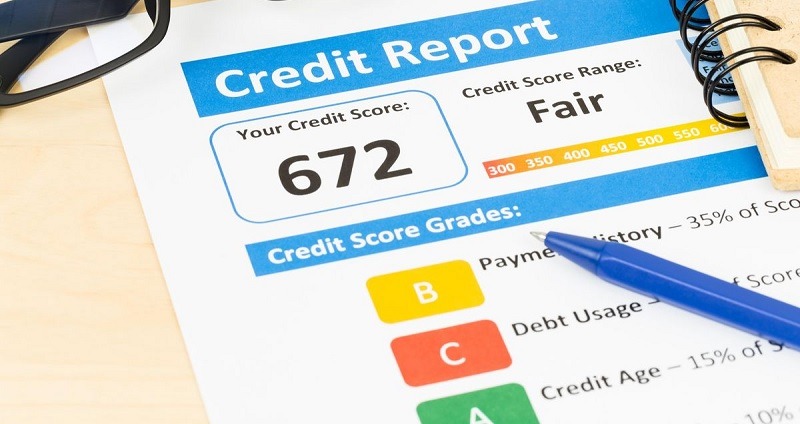
One of the things people think of when they think about good credit is that it allows you to take advantage of financial benefits such as low mortgage rates and credit card interest rates. But you’re probably still wondering, what makes a good credit score?
That is why you need to learn more about credit score ranges. Credit score ranges shows consumers how each range compares to each other and what benefits or consequences come with them. Regardless of what your credit score is, a financial advisor can help you navigate through your finances to help you find the best path for you.
What is a Credit Score?
For those who don’t know, a credit score is simply a number that indicates your perceived credit-worthiness in the eyes of credit rating companies, banks, and other businesses. If you’re the type of person who always pays their bills on time, in the full amount, and only use a small percent of the credit you have access to, then you probably have a high credit score. However, if you’ve missed a couple of payments, have experienced bankruptcy, defaults, collections, etc., then you probably have a lower credit score.
The most well known provider of credit scores is FICO. However, each of the three credit reporting bureaus, Experian, Equifax and Transunion, has its own take on your credit score, also known as a VantageScore. Basically, it is a modified version of your FICO score that is based on the each credit bureau’s scoring model and the information they have on your credit history.
There are also different FICO credit scores for bank cards, auto loans and more, and different versions of the FICO score. That’s why a single person can have several credit scores. Different bureaus may treat credit events or authorized user accounts differently, so you may have excellent credit according to your Transunion credit score but still be in the “good credit” range with your Equifax score.
Here are the components that make up a credit score. Payment history makes up 35% of the credit score. A further 30% is based on the debt you’re carrying and the credit available to you. The length of your credit history makes up 15% of your credit score.
In addition, 10% stems from whether or not you have any new lines of credit. This is because new credit is viewed unfavorably by credit bureaus, who tend to be suspicious of customers who are taking on too much debt in a short time. Finally, 10% of the credit score stems from the type of credit you have.
Credit Score Ranges
Now that we’ve explained what credit scores are and why they are so important, here we will go over the credit score ranges. The average credit score in the U.S. has increased over the recent years but we are still far from perfect.
The sheer number of credit scores makes it hard to name a definitive cut-off for good credit. Some credit scores max out at 750, others at 850 and others at 990. A lender who is assessing your credit-worthiness for, say, a mortgage, will look at several different scores to get a sense of the likelihood that you will pay back your debt on time.
Check out the charts below to see sample credit score ranges. For scores that max out at 850, a score of 700 or higher is considered good. If you’re unsure whether your credit score will get you the lowest mortgage rates you can always reach out to a mortgage broker.
FICO Credit Score Ranges
| Score Range | Category |
| 300-579 | Very Poor |
| 580-669 | Fair |
| 670-739 | Good |
| 740-799 | Very Good |
| 800-850 | Exceptional |
Ways to Improve Your Credit Score
If you want to open a bank account, get a loan or get a credit card, you ideally want to have the best credit score you can possible. If you are looking for ways to improve your credit score, here are a few things you can do:
- Pay off bills on time. This is one of the most important aspects of your credit score, so make sure you are staying up to date on any and all bills you owe each month
- Keep balances low. While it is important to use your credit cards to prove you can pay them off, make sure to keep your balances relatively low. Generally you want your balance each month to be less than 30% of your total available credit.
- Don’t get too many cards. Don’t get new credit cards just because you can get a free gift or because the deal looks too good to pass up. Only open new cards as needed.
- Don’t close cards. If you don’t use a card anymore, that’s fine, but don’t close the account. Just keep the card in a drawer.
- Deal with inaccuracies. There could be mistakes on your report dragging down your score. Deal with those.
Keep in mind that these methods aren’t foolproof and that it takes a certain period of time for your credit score t o change. As long as you follow these general rules and be smart about your finances, you could see your score rising over time.
 |
 |
Bottom Line
Credit scores can have a range from as low as 300 to as high as 850. In summary, a credit score is simply a tool used by financial institutions when people try to utilize tools at the establishment such as loans or open a new credit card.
As long as you follow the rules we have listed above and keep your credit utilization ratio low, you’ll see improvements in your credit score in no time! For more posts like this, check out our list of bank guides!




Leave a Reply